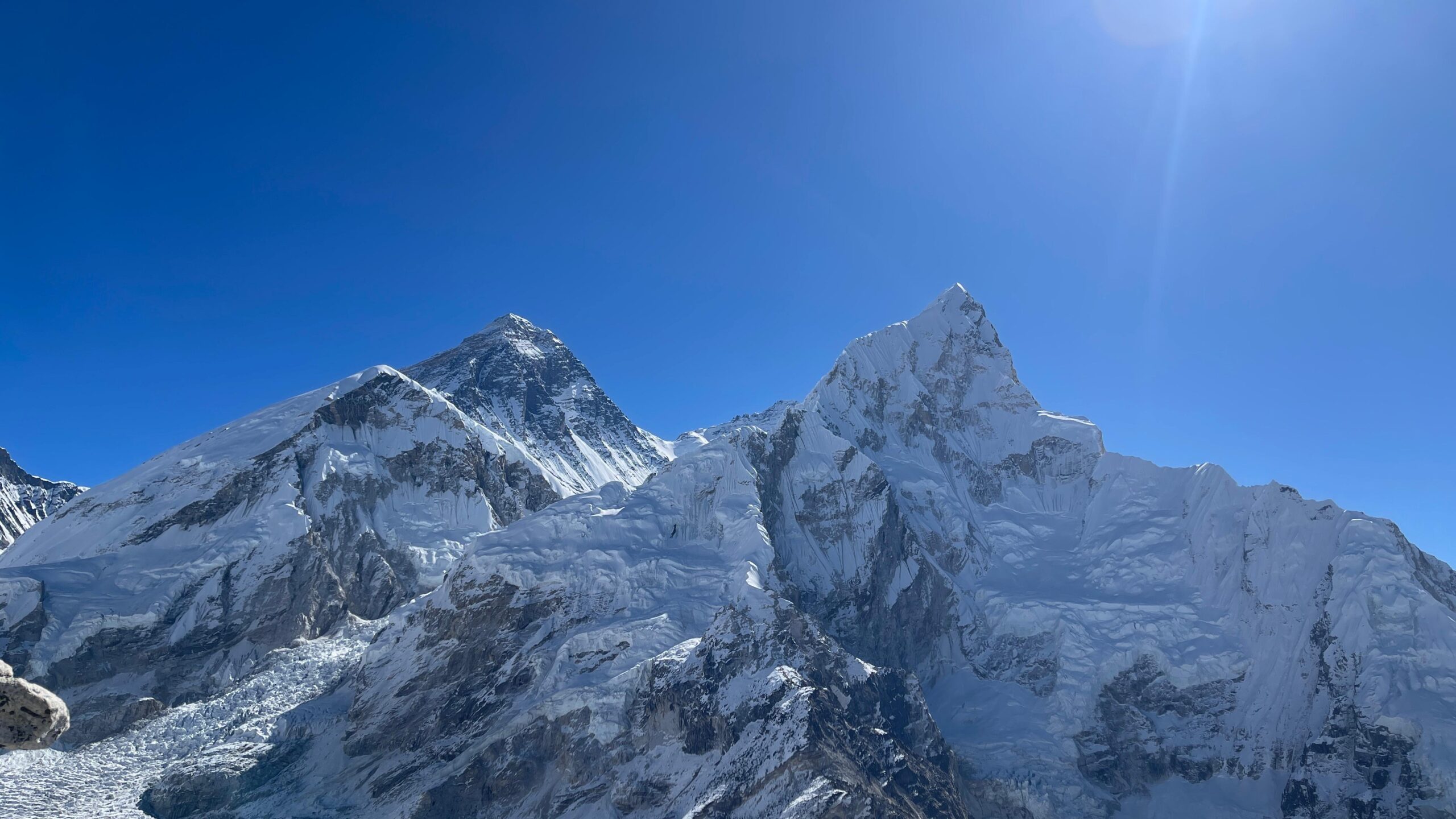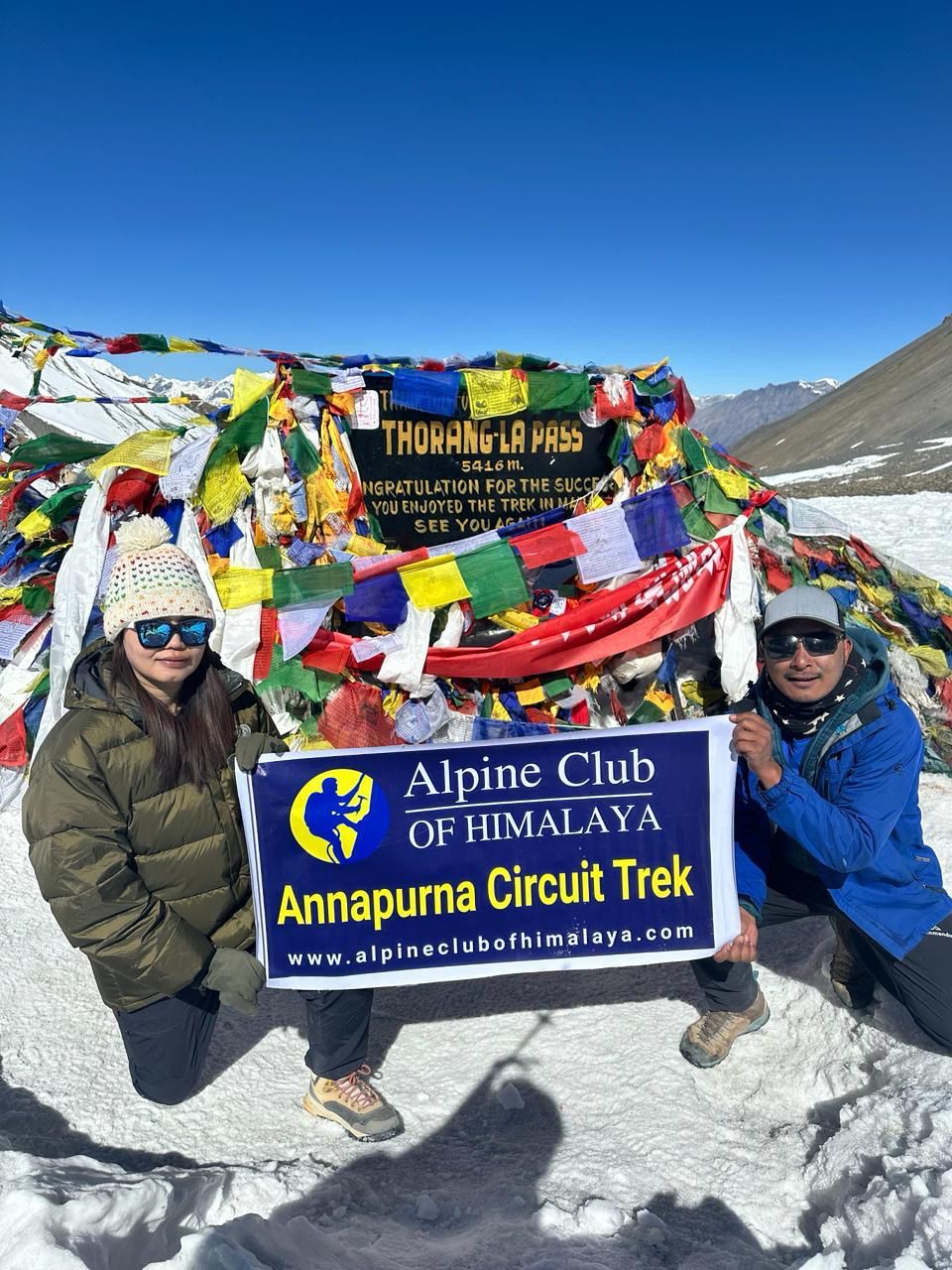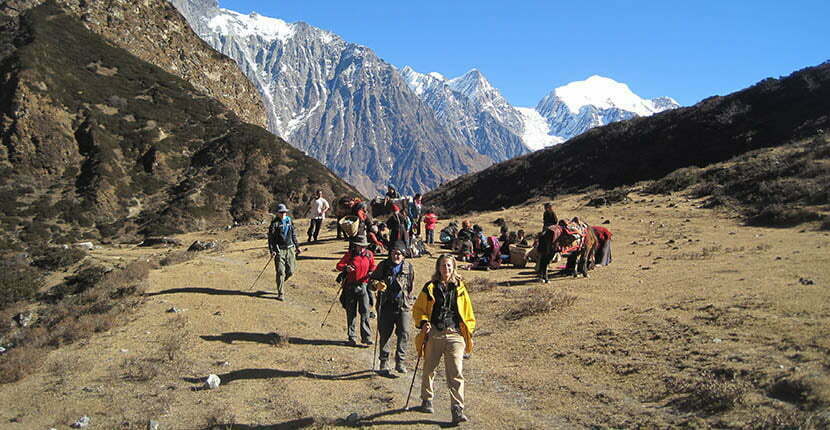Khopra Ridge with Poon hill Trek is one of the popular trekking in the Annapurna Region.
It is a recently open trail in the heart of the Annapurna Region, this off-the-beaten trek is secluded, isolated, and away from the popular trails and rarely visited by international tourists. Khopra Ridge Trek is a community trek, opened to raise the economic standard and quality of life of settlements along the Khopra Danda trail. This Trek is simple, clean, and authentic where you’ll witness communities of great strength, rare beauty, extreme fragility, and the travel experience is honest as it gets with great food and welcoming people. It’s raw and wild where the jungle meets the mountains. Khopra Ridge trek takes you to wet hill forests, deep wilderness, and a high lake.
Poon Hill Trek takes you to the foothills of Annapurna, and is the most famous vantage point of the region, offering breathtaking views of Himalayan scenery with trails covered with oaks, conifers, red and pink rhododendron, junipers, moss-draped trees, ferns, and varieties of orchids.
The Khopra Ridge with Poon Hill trek begins with a flight from Kathmandu to Pokhara and a short drive to the village of Kimchi. Kimchi is the starting point of your trek, from here the trail pass through rich and lush varieties of rhododendron forest, mixtures of confers with moss and orchid draped trees to high alpine terrain at Khopra Ridge, Muldai viewpoint, and Khayer Lake. After exploring the lake head towards Poon Hill a renowned vantage point of the Annapurna region.
Entry Permits & Requirements:
The permits you need for Khopra Ridge Trek are
- Annapurna Conservation Area Project (ACAP) Entry Permit, and
- TIMS (Tourist Information Management System) card.
Both Annapurna Conservation Area Project (ACAP) Entry Permit and TIMS Card can be obtained from the Nepal Tourism Board’s Office in Kathmandu or Tourist Information Centre in Pokhara.
To get these permits, you need to provide the following documents and information:
- Copy of your passport
- 2 Passport-sized photos
- Dates when your trek starts and ends
- Itinerary/route
- Entry and exit points
- Emergency Contact Information (local and home countries)
- Travel Insurance Details
Permit Fees: Annapurna Conservation Area Project (ACAP) Entry Permit: NRS 3000 per person for foreigners, NRS 1000 for citizens of SAARC countries, and NRS 100 for Nepalese.
TIMS Card: NRS 1000 if you are trekking with a guide. NRS 2000 for free individual trekker (FIT). For SAARC country nationals, NRS 300 if trekking with a guide and NRS 600 for a solo trekker.
You won’t have to worry about queuing up to get the permits as the company, or our guides will arrange all the permits for you.
Travel Insurance:
All clients engaging in any activity must have smart travel insurance or emergency evacuation insurance. Alpine Club of Himalaya highly suggests you obtain a comprehensive insurance plan from a reliable insurance firm that covers emergency evacuation insurance in high altitudes, personal injury, hospital expenditures, repatriation fees, helicopter rescue, and any other misfortune.
Passport and Visa:
Each client must be issued a valid visa with a six-month validity from the date of return by the Nepalese embassy in your country or the immigration office at Tribhuvan International Airport in Kathmandu.
Meals and drinking water:
Along the Annapurna Region Trek, you’ll be provided with various Nepali, Tibetan ethnic cuisines and varieties of continental as well as western meals. The region has a number of tea-house along the trail and is run by local inhabitants providing basic and minimal facilities to luxury ones, where you’ll have an opportunity to taste various cuisines which you’ll miss it most of the trekking trails of Nepal.
Annapurna Region is a plastic-free zone and has banned the use of bottled Mineral Water. However, drinking water taps are accessible with natural water supplies all along the trekking trail which are untreated, so direct use of the water is not recommended, you may refill boiling water or cold filter water from any of the teahouses along the trail.
If you buy a water purification tablet, chlorine drops or utilize SODIS (sunlight assisted) filtration procedures for further assurance, saving money and reducing plastic pollution.
Accommodation:
Tourist-friendly hotel, lodges and local accommodations are available in trekking trails and, providing with basic accommodation to luxury and grandeur ones. The trail caters to all budgets by offering a variety of accommodations, from luxurious hotels with all the amenities to cozy teahouses. Hikers can expect comfortable beds with pillows, electric blankets for chilly nights, hot and cold showers to refresh after a day’s adventure, and even free Wi-Fi to stay connected.
Teahouse along Annapurna region provide you with hot shower, western attached bathrooms and the rooms mostly include twin sharing beds as well as single bed, with hygienic and clean atmosphere, good mattresses, a pillow and blankets.
Campsites are also available along the trail providing a special opportunity for campers to sleep under the stars.
Best Time to Visit?
The best season for trekking to Annapurna Region is during the season of autumn and spring.
The months of September, October, November, March, April, and May are the best time to visit. These months are better in terms of visibility and climate conditions.
During the autumn season, the months of September, October, and November is one of the best time for trekking in this region, as the weather is clear bringing great visibility of the endless mountain ranges and lush green forest with warm temperatures, the nights are clear and is a perfect opportunity for stargazing.
The spring season of March, April, and May is also the best time to visit Annapurna Region, the end of winter season brings change in the region, varieties of colorful blooming trees of sub-alpine forest, high green pasture lands covered with wildflowers, mild temperatures and clear weather. In this season you’ll witness herds of sheep’s and yaks grazing in the green high lands.
Monsoon season is not favorable as the weather gets harsh and it’s hard to get around the country, with frequent rainstorm and landslides. So monsoon season is mostly avoided by trekkers.
In winter season Annapurna Region receives high snowfall covering most of the trails and making it impossible to travel in this reason.
Essential gears
- Sunglasses Polarized
- Sun hat
- Backpack (waterproof) (can be rented)
- Refillable water bottles
- Good quality, super-warm 4-season sleeping bag (can be rented)
- Hand towel
- Energy Bars
- Wet wipes
- Toiletries
- Frontal torch and flashlight with spare batteries
- Sunblock and high SPF lip balm
- Map
- Compass
- Penknife
- Washbag (Toothpaste, Toothbrush, and other personal hygiene items)
- Sewing Kit
- Trekking poles (can be rented)
- Duffel Bag (provided by the company)
Clothing:
- Anorak/parka with hood (waterproof) x 1
- Down jacket x 1
- Fleece x 1
- Thermal top x 2
- T-shirts x 3, long sleeve shirts x 2-3
- Waterproof trousers x 1
- Warm trousers x 2
- Hiking shorts/trousers x 1
- Long thermal pants x 1
- Thermal underwear
- Socks thin and thick x 6
- Hiking boots
- Gaiters
- Comfortable closed shoes (for around camp)
- Mittens and ski gloves
- Balaclava and woolen hat
- Scarf
First Aid kit:
- Imodium or Pepto Bismo capsules for upset stomach or diarrhea.
- Diamox for altitude sickness. The guide will help you to take it.
- One small personal-sized first-aid kit with blister treatments such as moleskin, bands, anti-infection ointments, muscle relief ointments.
Overview
Khopra Ridge/Danda is a recently open trail in the heart of the Annapurna Region, this off-the-beaten trek is secluded, isolated, and away from the popular trails and rarely visited by international tourists. Khopra Ridge Trek is a community trek, opened to raise the economic standard and quality of life of settlements along the Khopra Danda trail. Khopra Ridge Trek is simple, clean, and authentic where you’ll witness communities of great strength, rare beauty, extreme fragility, and the travel experience is honest as it gets with great food and welcoming people. It’s raw and wild where the jungle meets the mountains. Khopra Ridge trek takes you to wet hill forests, deep wilderness, and a high lake.
Important Note:
Your safety is of paramount importance to us at the Alpine Club of Himalaya. We have the absolute authority to cancel the trip or change the itinerary, when deemed necessary or when we have reason to believe your safety is at stake. Weather conditions, the health condition of a group member, natural disasters, and such, can contribute to changes in the itinerary when traveling in remote mountainous regions. In these extreme situations, we kindly request that you offer your full co-operation to the trusted leader of the group appointed by the Alpine Club of Himalaya. However, we assure you that we will make every effort to keep to the above itinerary.
Trip Highlight
- Khopra Ridge Trek with Poon Hill is a mixture of isolated and popular trails.
- Witness panoramic views of Dhaulagiri, Annapurna Massif, Hiunchuli, and other peaks from Khopra Ridge and Poon Hill.
- Witness sunrise and sunset from the vantage points of Khopra Ridge, Poon Hill, and Muldai.
- Visit Khayer Lake, a sacred and holy high altitude lake close to Annapurna South
- Hike through various settlements, sub-tropical jungles, and rhododendron forests.
- Learn about the culture and lifestyle of the people along the trail.


















Write a Review